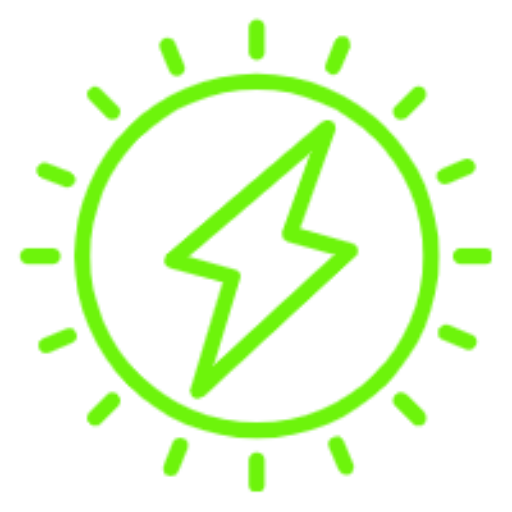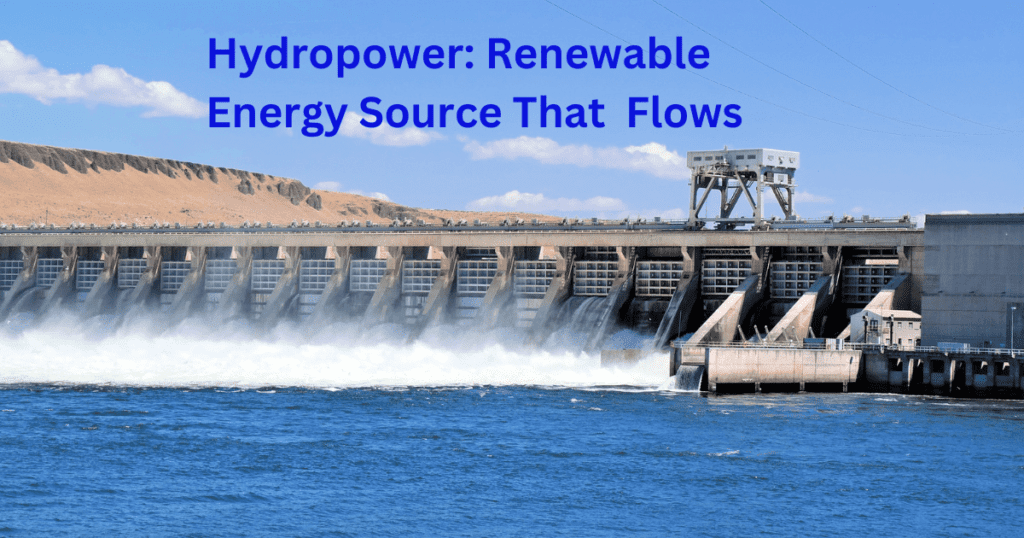Last updated on March 2nd, 2025 at 03:53 pm
Hydropower is a clean and renewable energy source that harnesses the power of moving water to generate electricity. It’s a sustainable energy source that won’t run out, unlike fossil fuels.
So, when it comes to renewable energy, there are a lot of options out there. But, in my opinion, hydropower is one of the coolest and most exciting. Why? Well, let me tell you!
Hydropower plants use the power of flowing water to generate electricity. Think about a river or a waterfall – the water is constantly moving, right? That movement can be harnessed to turn turbines, which in turn produce electricity.
And as we all know, the demand for energy around the world is skyrocketing. Fossil fuels, which have been the primary source of energy for decades, are finite resources and their use has contributed to climate change. Therefore, it’s important to transition to renewable energy sources such as hydropower to reduce our reliance on non-renewable resources and mitigate the impact of climate change.
In this article, we’ll take a closer look at what is hydropower, how hydropower works, its benefits, and some of the challenges associated with its use. In addition, we will also discuss the impact of hydropower on environments, biological diversity, and the economy. So, let’s ride the waves of knowledge and explore the reign of hydropower!
What is hydropower and hydroelectricity?
Hydropower is a type of renewable energy that harnesses the power of flowing water to generate electricity. It’s a renewable energy source because water is constantly replenished by natural processes such as rainfall and snowmelt. This technology has been around for centuries and has been used to power watermills for grinding grain and other purposes.
Hydroelectricity is a form of hydropower that uses water to turn turbines, which then generate electricity. It works by using the kinetic energy of falling water to spin the turbines, which are connected to generators that produce electricity. The energy generated by hydropower is clean, and emissions-free, making it an environmentally friendly alternative to fossil fuels.
What is a hydroelectric power plant?
A hydroelectric power plant, also known as a hydropower plant, is a facility that generates electricity by converting the energy of flowing water into electrical energy. The process involves the use of a dam to create a reservoir of water, which is then released through pipes or channels to flow down to the turbines. The force of the flowing water turns the turbines, which then rotate a generator that produces electricity.
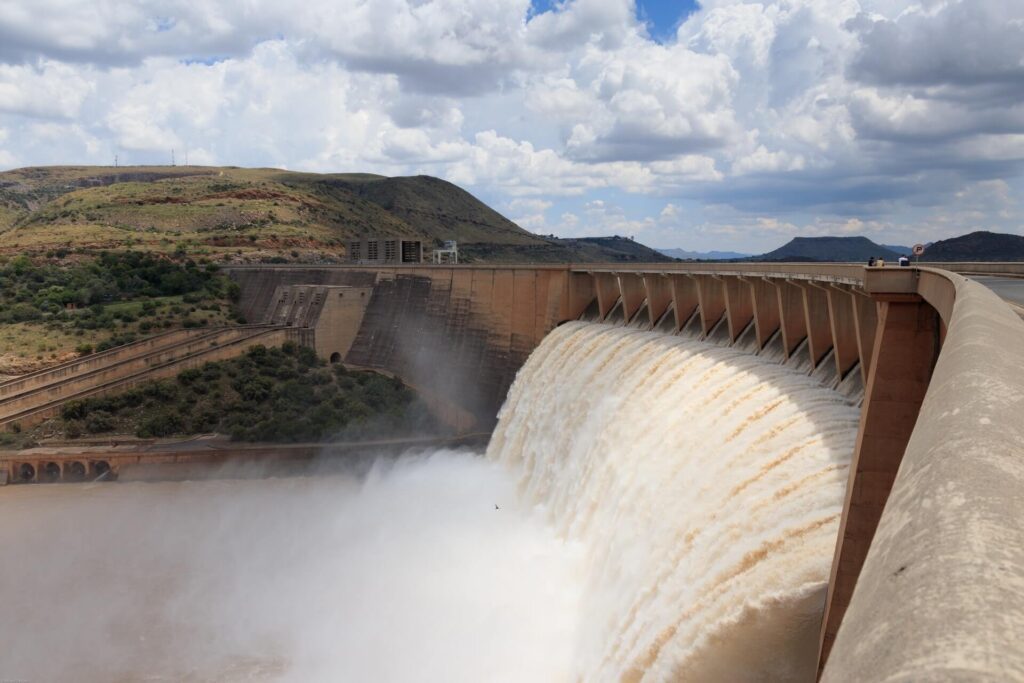
How does hydropower work to generate electricity? Step-by-step process
Now that we have a general understanding of what hydropower is, let’s take a closer look at how it works.
You know that feeling of standing next to a river or waterfall and feeling the force of the rushing water? Well, that force is what hydropower plants use to generate electricity.
Hydropower plants use the kinetic energy of moving water to turn turbines, which are essentially big metal propellers. The turbines are connected to generators, which then convert the rotational energy of the turbines into electrical energy.
Now, one way to generate hydropower is by building a dam. The dam creates a reservoir of water, which is held back by the dam. When the water is released, it flows down through pipes or channels and turns the turbines at the base of the dam. The turbines are designed with blades or buckets that capture the energy of the water flow and convert it into rotational energy, which then generates electricity.
The amount of electrical energy generated by a hydropower plant depends on various factors like the amount of water flowing through the turbines, the height of the dam or water source, and the efficiency of the turbines and generators.
Another way to generate hydropower is through run-of-river systems. This system involves diverting water from a river or stream and channeling it through canals or pipes to the turbines. After the water has passed through the turbines, it is then returned back to the river downstream. Unlike the dam method, run-of-river systems don’t need a dam or a reservoir, which makes it have a lower environmental impact. However, it can generate less electricity.
Lastly, we have pumped-storage hydropower, which uses excess electricity to pump water from a lower reservoir to a higher reservoir. When more electricity is needed, the water is released from the upper reservoir, flows through the turbines to generate electricity, and then is returned back to the lower reservoir. Pretty smart, right?
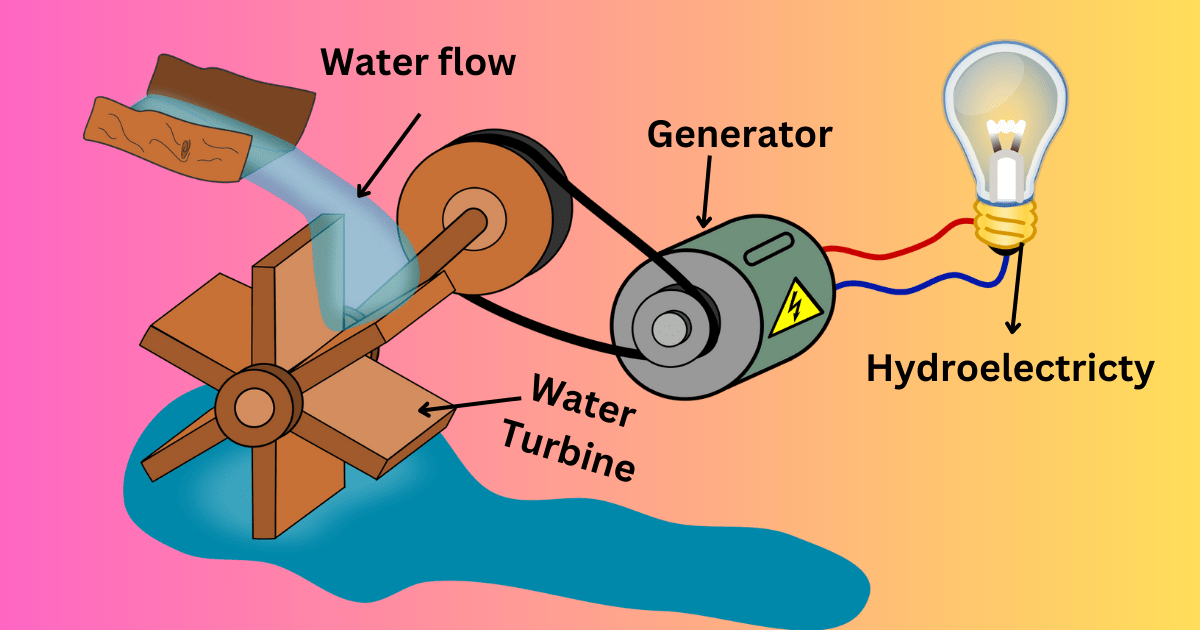
What are the different types of hydroelectric power plants?
So, when we talk about hydropower facilities, we’re basically referring to the different ways we can generate electricity using water as the source of power. There are several types of hydropower facilities, and they can be classified based on factors such as their size, capacity, and location.
- Large-scale hydropower plants: These are typically built on large rivers or reservoirs and can generate a significant amount of electricity. They often have a capacity of more than 100 MW and can supply power to entire cities or regions.
- Small-scale hydropower plants: These are often built on smaller rivers or streams and have a capacity of less than 10 MW. They can be used to power remote communities or for local industries.
- Micro hydropower plants: These are small-scale hydropower plants with a capacity of less than 100 kW. They can be used to power individual homes or small businesses.
- Pumped storage hydropower plants: These plants are designed to store energy by pumping water from a lower reservoir to a higher reservoir during times of low electricity demand. The water is then released to generate electricity during times of high demand.
- Tidal power plants: These plants use the kinetic energy of tides to generate electricity. They are typically located in coastal areas with large tidal ranges.
- Run-of-river hydropower plants: These plants generate electricity by harnessing the natural flow of a river or stream. They do not require a dam or reservoir, but instead, use a channel or penstock to direct water through turbines.
Do you know? In the 1980s, the Soviet Union built a hydropower plant that was so powerful it caused earthquakes in the area.
A brief history of Hydropower
Believe it or not, hydropower has been around for hundreds of years! The ancient Greeks and Romans were using it to power water wheels for grinding grain and pumping water. And in China, hydropower was being used to power irrigation systems and bellows for smelting iron. Can you imagine that?
But it wasn’t until the Industrial Revolution that hydropower became a significant source of energy for powering factories and machinery. In 1849, British-American engineer James Francis developed the first modern water turbine – the Francis turbine. And then, the invention of the water turbine led to the development of large-scale hydropower plants that could generate electricity. That’s when things started getting really interesting!
The first hydropower plant in the United States was built in 1882 on the Fox River in Wisconsin. It used a water turbine to power a generator and provided electricity to nearby homes and businesses. And from there, the growth of hydropower was unstoppable. Many large-scale hydropower plants were built across the world, and the Hoover Dam, completed in 1936, is one of the most famous examples. It generates enough electricity to power more than a million homes – that’s a lot of power!
Today, hydropower is still an important source of renewable energy, providing over 17% of the world’s electricity. And many countries are investing in new hydropower projects to meet their growing energy needs while reducing their carbon footprint. It’s exciting to see how hydropower has come a long way and how it continues to play an important role in shaping our world.
What are the advantages and disadvantages of hydropower?
Like any other source of energy, it has both advantages and disadvantages. Let’s take a closer look at them:
Advantages of Hydropower:
- It’s renewable: Hydropower is generated by the flow of water, which is a naturally replenishing resource. Unlike fossil fuels, which are finite and will eventually run out, hydropower can be generated as long as there’s water flowing.
- Low operating costs: Once a hydropower plant is built, the operating costs are relatively low, making it a cost-effective form of energy in the long run. This is because there are no fuel costs associated with generating hydropower.
- Flexibility: Hydropower plants can be quickly started and stopped to respond to changes in demand. This makes hydropower a very flexible source of energy that can be used to balance the electricity grid.
- Clean energy: Unlike non-renewable energy sources, hydropower doesn’t produce any greenhouse gas emissions, making it a clean source of energy. This is important for mitigating the effects of climate change.
- Flood Control and Irrigation: Many hydropower projects provide additional benefits like flood control and irrigation for agriculture. For example, dams can be used to regulate water flow downstream, which can help prevent flooding during heavy rainfall.
Disadvantages of Hydropower:
- Environmental impact: The construction of large dams and reservoirs can have a significant impact on the environment. This can include habitat loss for fish and wildlife, altered water flows, and decreased water quality. Additionally, the greenhouse gas emissions associated with building a dam can offset some of the benefits of generating hydropower.
- Displacement of communities: Building large dams can require the displacement of people from their homes and communities, which can be a significant disruption. This is because the land that’s flooded to create the reservoir behind the dam was often home to communities.
- Limited suitable sites: In order to generate hydropower, a site must have a steady flow of water and sufficient elevation change. This limits the number of potential sites that can be used for hydropower generation.
- High upfront costs: Building a hydropower plant can be very expensive, requiring significant upfront costs. This can be a barrier to entry for smaller companies and developing countries.
- Risk of failure: While the likelihood of a dam failure is low, it’s still a risk that needs to be considered when building and operating hydropower plants. Dams must be designed and maintained to withstand extreme weather events, seismic activity, and other potential hazards.
Fun fact: In some places, like Nepal, hydropower is used to power prayer wheels in Buddhist temples.
What are the advantages of hydropower over other renewable energy sources?
While there are certainly advantages to other renewable energy sources, like solar and wind power, hydropower has some unique benefits that make it a valuable part of our renewable energy mix.
- Benefits of hydropower over solar power: While solar energy can be a great source of renewable energy, it’s dependent on weather conditions and can be intermittent. In contrast, hydropower can generate electricity consistently, as long as there’s a steady flow of water. Additionally, hydropower plants can be highly efficient, with some modern plants reaching efficiencies of up to 90%. This means that hydropower can generate more electricity using fewer resources.
- Benefits of hydropower over wind power: Wind power generates electricity using wind turbines, while hydropower uses flowing water. While wind turbines can generate electricity with an efficiency of around 30%, hydropower plants can be much more efficient. Additionally, hydropower can generate electricity consistently, as long as there’s a steady flow of water, whereas wind power can be intermittent and dependent on weather conditions. However, wind power can be more scalable than hydropower, as wind turbines can be installed on both small and large scales. Also, wind turbines require land use, while hydropower plants can be built in existing waterways or behind existing dams.
- Benefits of hydropower over geothermal power: Geothermal power generates electricity using heat from the earth’s core, while hydropower uses flowing water. While both can generate electricity consistently, hydropower is less dependent on specific geological conditions than geothermal power. Geothermal power plants are typically located in areas where there is high geothermal activity, such as near tectonic plate boundaries or volcanoes. In contrast, hydropower plants can be built in any location with access to flowing water, such as rivers or streams.
- Benefits of hydropower over biomass energy: Biomass energy generates electricity by burning organic material, such as wood chips or agricultural waste. In contrast, hydropower does not require the burning of any fuels. While biomass energy can be a great source of renewable energy, it can also contribute to deforestation and other environmental issues. Hydropower, on the other hand, has a relatively low impact on the environment and does not produce greenhouse gases or other pollutants.
Which countries produce the most hydroelectric power in the world?
Did you know that hydropower is one of the largest sources of renewable energy in the world? So, which countries are leading the charge in producing this clean energy? According to the 2021 data from International Hydropower Association, here is the list of the 10 countries, which produces the most hydroelectric power:
- China: China is the world’s largest producer of hydropower, generating around 1340 terawatt-hours per year. The country has a large number of hydroelectric dams, with the Three Gorges Dam being the largest in the world. China produces 16% of its total electricity using hydropower.
- Canada: Canada ranks second in the world in hydropower generation, producing 377 terawatt-hours per year. The country has many hydroelectric projects spread across its vast landscape, including the Churchill Falls project, which is one of the largest in North America.
- Brazil: Brazil is the third-largest producer of hydropower in the world, generating around 341 terawatt-hours hours per year. The country has a high potential for hydropower due to its many large rivers, and the Itaipu Dam on the Brazil-Paraguay border is the second-largest hydropower facility in the world.
- United States: The United States is the fourth-largest producer of hydropower, generating around 260 terwatt-hours per year. The country has many hydroelectric dams, with the Grand Coulee Dam on the Columbia River being the largest in terms of generating capacity.
- Russia: Russia is the fifth-largest producer of hydropower, generating around 229 terawatt-hours per year. The country has a vast number of rivers and a long history of using hydropower, with the Sayano-Shushenskaya Dam on the Yenisei River being the largest in Russia.
- India: India is the sixth-largest producer of hydropower, generating around 160 terawatt-hours per year. The country has many large rivers, and the Sardar Sarovar Dam on the Narmada River is one of the largest in India.
- Norway: Norway is the seventh-largest producer of hydropower, generating around 144 terawatt-hours hours per year. The country has a high potential for hydropower due to its many mountains and rivers, and the country relies heavily on hydropower for its electricity needs.
- Japan: Japan is the eighth-largest producer of hydropower, generating around 99 terawatt-hours per year. The country has many small and medium-sized hydropower projects, with the Kurobe Dam being the largest in terms of generating capacity.
- Sweden: Sweden is the ninth-largest producer of hydropower, generating around 71 terawatt-hours per year. The country has many large rivers, and the Harsprånget Dam on the Lule River is one of the largest in Sweden.
- France: France generates around 63 terawatt-hours of hydropower per year, making it one of the largest producers in Europe. Its extensive network of rivers and streams provides ample opportunities for hydroelectric power plants, with the Grand’Maison Dam being one of the largest facilities with a capacity of 1,800 megawatts.
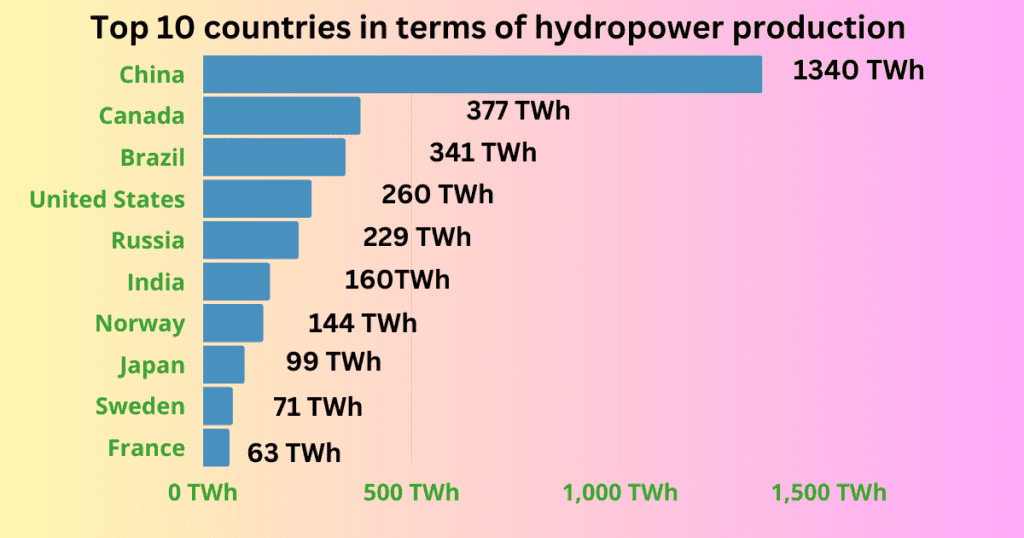
Which countries frequently use hydropower?
There are several countries that have made significant efforts to transition to hydropower and other renewable sources of energy in order to become less dependent on non-renewable resources. Here is the list of 9 countries that use hydropower most:
- Paraguay: Hydropower accounts for over 100% of Paraguay’s electricity production. The country is a major exporter of hydropower to neighboring Brazil.
- Tajikistan: Hydropower accounts for nearly 100% of Tajikistan’s electricity production. The country has significant untapped hydropower potential and is actively developing new projects to meet its growing energy demand.
- Nepal: Hydropower accounts for over 96.2% of Nepal’s electricity production.
- Norway: Norway produces over 96% of its electricity from hydropower, which has enabled the country to have one of the cleanest and most reliable power systems in the world. The country exports a significant amount of its hydropower to neighboring countries.
- Albania: Hydropower accounts for over 95% of Albania’s electricity production.
- Zambia: Hydropower accounts for over 85% of Zambia’s electricity production.
- Mozambique: Hydropower accounts for over 80% of Mozambique’s electricity production.
- Costa Rica: Hydropower accounts for over 72% of Costa Rica’s electricity production. The country also produces a significant amount of geothermal and wind energy.
- Iceland: Hydropower accounts for over 70% of Iceland’s electricity production. The country also produces a significant amount of geothermal energy, which is used for heating and electricity production.
Importance of hydropower in the United States
Hydropower is a crucial component of the United States energy mix. According to the U.S. Department of Energy, in 2021, hydropower accounted for 31.5% of the country’s renewable electricity generation and 6.3% of the total electricity production in the United States.
Hydropower provides essential power, storage, and flexibility services as the United States transitions to 100% clean electricity by 2035 and net-zero emissions by 2050.
In addition to being clean and reliable, hydropower also has a significant impact on the US economy. According to the National Hydropower Association, the hydropower industry currently employs up to 300,000 workers in project development, manufacturing, operations, and maintenance and it could create more than 1.4 million jobs by 2025.
What are the biggest hydroelectric power plants in the world?
- Three Gorges Dam – Located in Hubei, China, this dam has the largest instantaneous generating capacity in the world, with a capacity of 22,500 MW. It is also the largest power-producing facility ever built.
- Baihetan -Baihetan Dam, located on the Jinsha River in China, is currently the second largest hydroelectric power plant in the world with a capacity of 16,000 MW.
- Itaipu Dam – This dam is located on the border between Brazil and Paraguay and has a capacity of 14,000 MW. It is the second-largest hydroelectric power plant in the world.
- Xiluodu – This dam is located on the Jinsha River in China and has a capacity of 13,860 MW. It is one of the largest hydropower stations in China and was completed in 2013.
- Belo Monte – Located in Brazil, this dam has a capacity of 11,233 MW. It is the fourth-largest hydroelectric power plant in the world and was completed in 2019.
- Guri – This dam is located in Venezuela and has a capacity of 10,235 MW. It is one of the largest hydroelectric power plants in the world and has been in operation since 1986.
- Wudongde-Wudongde Dam is a hydroelectric dam located on the Jinsha River in southwest China’s Yunnan province. With an installed capacity of 10.2 GW and was completed in 2022.
- Tucuruí – This dam is located in Brazil and has a capacity of 8,370 MW. It is one of the largest hydroelectric power plants in Brazil and was completed in 1984.
- Grand Coulee – Located in the United States, this dam has a capacity of 6,809 MW. It is the largest hydropower station in the United States and has been in operation since 1942.
- Xiangjiaba – This dam is located on the Jinsha River in China and has a capacity of 6,448 MW. It is one of the largest hydropower stations in China and was completed in 2014.
- Longtan – Located in China, this dam has a capacity of 6,426 MW. It is one of the largest hydropower stations in China and was completed in 2009.
- Sayano-Shushenskaya – This dam is located in Russia and has a capacity of 6,400 MW. It is the largest hydroelectric power plant in Russia and has been in operation since 1978.
Impact of hydropower on environment, ecology, and biological diversity
Hydropower is considered to be a clean and renewable source of energy, but it still has a significant impact on the environment, ecology, and biological diversity.
While hydropower generators don’t directly emit air pollutants, the construction of dams, reservoirs, and the operation of hydroelectric generators can affect the environment.
One of the most significant environmental impacts of hydropower is the alteration of river flow and water quality. Dams and reservoirs constructed for hydropower purposes can result in changes to the natural flow of rivers and the quality of water. These changes can cause significant ecological impacts, including the displacement of fish populations, changes in sediment transport, and changes in the distribution and abundance of invertebrates, plants, and other aquatic organisms.
Hydropower facilities can have harmful effects on aquatic ecosystems despite efforts to minimize them. Even with measures such as fish ladders and in-take screens, the turbine blades can still injure or kill fish and other organisms, leading to disruptions in food webs and affecting the overall health of aquatic ecosystems.
The alteration of river morphology and geomorphology is another impact of hydropower on the environment. Run-of-river plants, in particular, can cause changes to river channels, banks, and bed morphology, leading to erosion and sedimentation that can have negative effects on both the physical and biological components of river ecosystems.
Moreover, hydropower facilities can cause the fragmentation of river habitats, which can have significant consequences for wildlife populations. Additionally, the loss of riparian vegetation due to hydropower facilities can have an impact on wildlife populations that depend on these habitats.

Impact of hydropower on economy
Hydropower is one of the most important renewable energy sources worldwide, and it has a significant impact on job creation and the economy. According to the International Renewable Energy Agency (IRENA), in 2021, the renewable energy sector produced 12.7 million jobs globally, in which the hydropower sector created approximately 2.36 million jobs.
These jobs were created mainly in the area of manufacturing, construction, and operation and maintenance.
China and India is the largest contributor to global hydropower employment, accounting for 37% and 18% of all jobs in the sector respectively. Brazil, the United States, and the Russian Federation are also the leading hydropower job-producing countries.
Future of hydropower
When it comes to the future of hydropower, there’s a lot of debate and uncertainty. On the one hand, hydropower has been around for a long time and is a proven source of renewable energy. It’s reliable, efficient, and can provide power to large areas. On the other hand, there are concerns about the environmental impact of dams and the displacement of communities that can come with large-scale hydropower projects.
Despite these concerns, many experts believe that hydropower will continue to play an important role in the global energy mix in the years to come. As the world transitions to cleaner sources of energy and governments commit to reducing carbon emissions, hydropower could become an even more attractive option.
There are also new technologies and innovations in the works that could make hydropower even more efficient and sustainable. For example, researchers are working on ways to improve the design of turbines and generators to make them more efficient and reduce their impact on fish populations. There are also efforts to develop smaller-scale hydropower projects that can be more easily integrated into existing infrastructure and that have less of an impact on the environment.
One trend that is likely to continue in the future is the development of smaller-scale hydropower projects, particularly in remote areas where access to electricity is limited. These projects often use innovative technologies, such as run-of-river hydropower or micro-hydropower systems, which can generate power without large dams or reservoirs.
Another trend is the integration of hydropower with other renewable energy sources, such as wind and solar power, to provide a more reliable and stable supply of electricity. This is being facilitated by advances in technology, such as battery storage, which can store excess energy from intermittent renewable sources and release it when needed.
In addition to its role in electricity generation, hydropower is also being used for other purposes, such as water management, irrigation, and flood control. This could become increasingly important in the future as climate change leads to more frequent and severe weather events.
Closing thoughts
Well, folks, that’s a wrap! We’ve explored the ins and outs of hydropower, and hopefully, you’ve gained a better understanding of this renewable energy source. Despite some of the challenges faced by hydropower, such as the environmental impact of building dams and the need for significant investment, the benefits of this energy source are too significant to ignore. Hydropower is clean, reliable, and cost-effective, making it a promising solution for our future energy needs. And with innovative technologies and new projects popping up all over the world, we can look forward to an even brighter future for hydropower. Let’s keep working together to make our world a cleaner, greener place!
Sources:
US Department of Energy: https://www.energy.gov/
International Hydropower Association: https://www.hydropower.org/
National Hydropower Association: https://www.hydro.org/
US Energy Information Administration: https://www.eia.gov/todayinenergy/
International Renewable Energy Agency (IRENA): https://www.irena.org/
